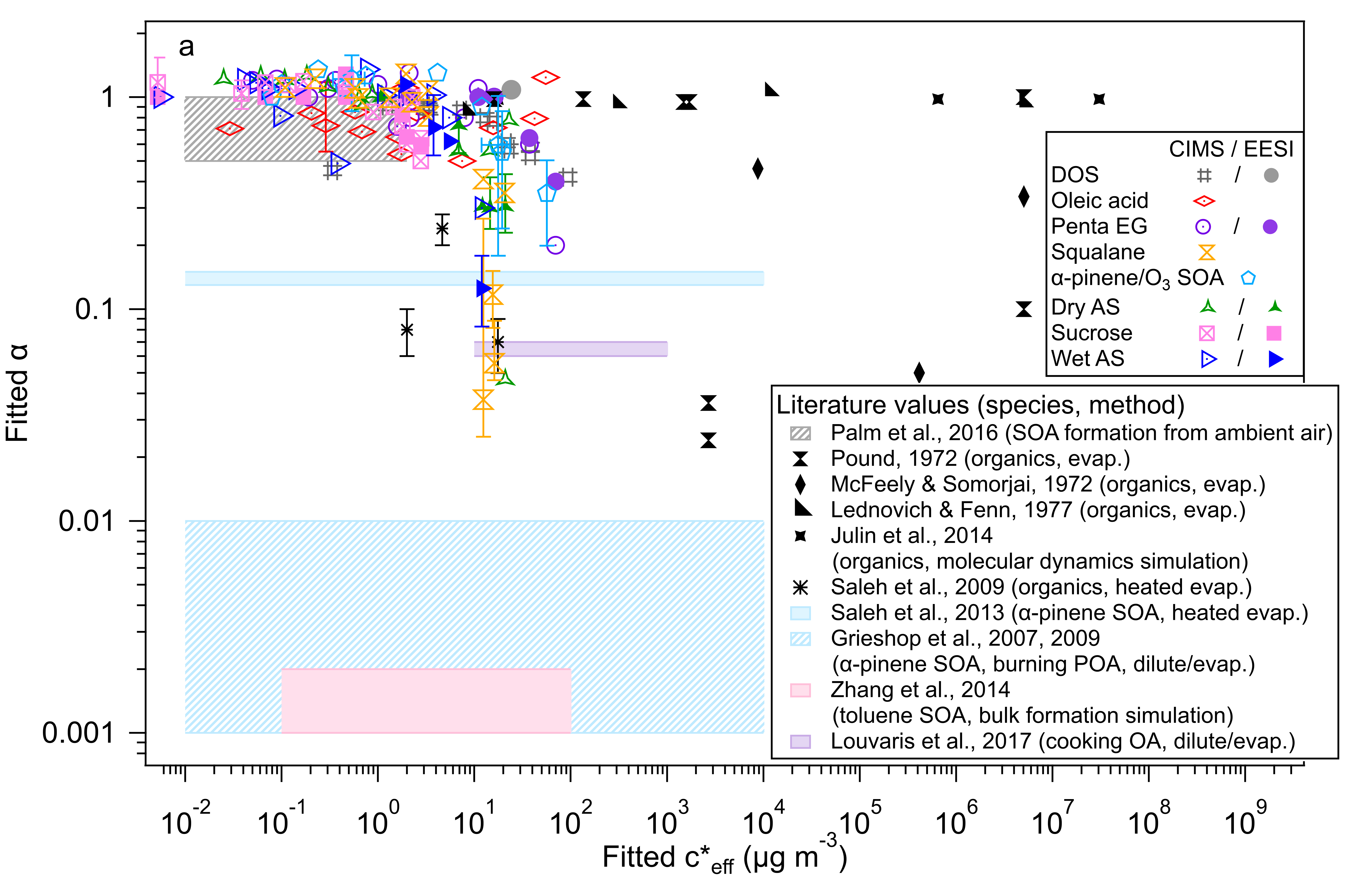Near-unity mass accommodation coefficients for low/semi-volatile organic gases into diverse aerosols
Submitter
Jimenez, Jose-Luis — University of Colorado
Day, Douglas A. — University of Colorado, Boulder
Area of research
Aerosol Processes
Journal Reference
Science
Accommodation coefficients (α, the probability of a gas molecule sticking to a particle upon collision) were directly measured for a wide range of oxidized organic molecules and particles of different compositions, phases, and polarities. Results showed that in all cases, α was close to unity. Values of ~0.001-0.01 that have been reported in several more indirect studies were never observed.
Impact
Previous measurements of α, typically using less direct methods, have spanned several orders of magnitude, thus providing little constraints for modeling gas-particle (G/P) partitioning kinetic processes, and leading to much confusion over the interpretation of different measurements. Moreover, several studies have shown contrasting results suggesting that large kinetic limitations (possibly due to particle phase state) may or may not be important for G/P exchange. This work suggests that low values of α do not constitute substantial kinetic limitations of G/P exchange for ambient-relevant gases and particles.
Summary
The partitioning of low- and semi-volatile organic compounds into and out of particles significantly influences secondary organic aerosol formation and evolution. Most atmospheric models treat partitioning as an equilibrium between gas and particle phases, despite few direct measurements and a large range of uncertain mass accommodation coefficients (α). For the first time in this study, the dynamic, isothermal partitioning of a wide range of oxidized organic compounds was measured using mass spectrometry in a Teflon chamber, for both gas-phase and particle-phase species. Measurements were conducted under dry and humid conditions using seeds of different properties that are atmospherically relevant. The study uses a new “fast burst” method for quickly producing oxidized compounds that allows for a decoupling of the timescales of reaction (10 s), condensation (100s of s), and vapor wall loss (1000 s), together with state-of-the-art gas (NO3--CIMS) and particle (EESI-MS) techniques capable of making fast (seconds) molecular-level measurements. α values determined independently from gas- and particle-phase observations are consistent and average 0.88 ± 0.33 for all the studied seeds and probe gases. Results also imply fast mixing, within ~200 s, between dry α-pinene/O3 SOA and the oxidized compounds. These results indicate that mass transfer limitations in the atmosphere may be less important than some recent studies suggest.



